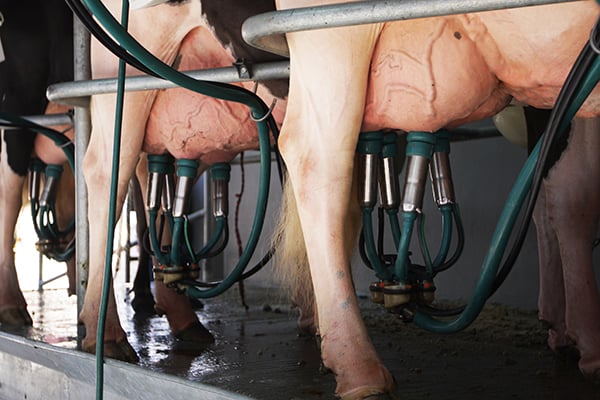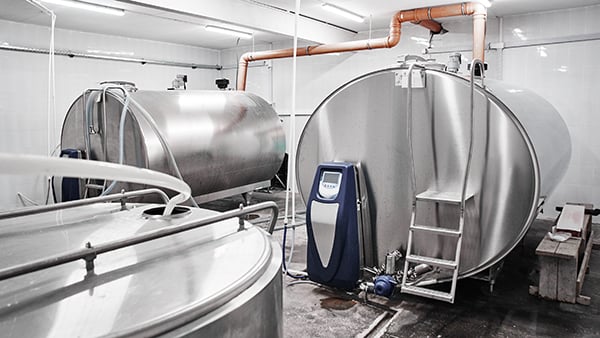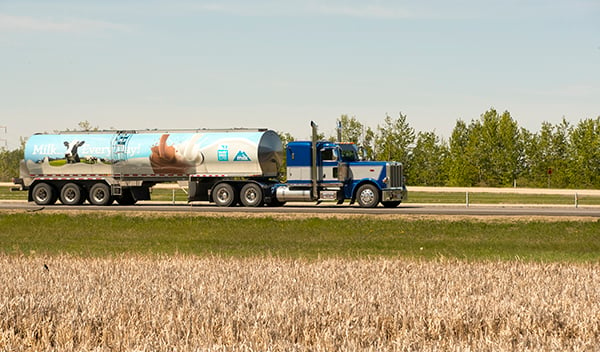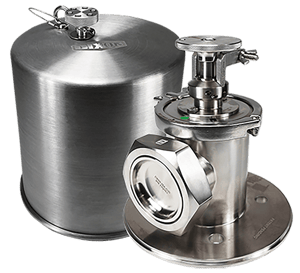
I scream, you scream, we all scream for ice cream! Whether it’s chocolate on a cone, vanilla in a cup, or a large banana split, no summer or celebration is complete without this sweet treat. According to the International Dairy Foods Association, "The average American consumes approximately 23 pounds of ice cream and related frozen desserts per year." Vanilla, chocolate, cookies and cream, mint chocolate chip, and chocolate chip cookie dough are the top five flavors of ice cream in the U.S. respectively.
It's no secret milk is used to make ice cream, but how does the milk go from cow to cone? Dairy's haul across America has transformed over the years, but the overall concept is the same. Keep reading to get the scoop on this process.
 Photo courtesy of iStock/lucop
Photo courtesy of iStock/lucop
From Cow to Cone
The first step is to milk the cows. Long gone are the arduous days of milking cows by hand. Today, cows are milked two or three times a day by machines. A centrifugal or positive displacement pump moves the milk through a system of pipes and sanitary filters. The filters remove any unwanted particles such as dirt, sand, or worst of all manure. No one wants poop in their ice cream scoop!
From there, the milk flows into a cooling tank where it is stored at 36°F (2.2°C) to 38°F (3.3°C). The milk never touches human hands, which is important for food safety.
 Photo courtesy of iStock/amixstudio
Photo courtesy of iStock/amixstudio
When the cooling tank is full, dairy farmers work with a trucking company to schedule a pickup. The milk is loaded onto a sealed and insulated bulk tank truck to keep the milk at the proper temperature. By law, milk must be 45°F (7.2°C) or below. At this temperature, minimal bacteria will grow, but 40°F (4.4°C) or less is ideal to protect the quality of the milk. The tank truck transports the milk to a dairy processing plant where it is pasteurized and made into ice cream, cheese, and other dairy products.
Moving vast quantities of milk from the tank to the truck is nothing like pouring milk on your breakfast cereal. This high-volume fluid transfer process requires the assistance of a specially designed device called a tanker valve.
 Photo courtesy of iStock/Stefonlinton
Photo courtesy of iStock/Stefonlinton
Dixon's DX60-Series Hygienic Tanker Valve
The DX60-Series Hygienic Tanker Valve is used on 3A food-grade stainless steel bulk transport trailers to safely and hygienically load and unload milk and other products. These products include but are not limited to, juices, chocolate, glycerin, and many types of food-grade oils. The valve is 3A certified, meaning it meets sanitary standards for design and fabrication and is safe to use with food products.
 Features
Features
The valve housing of Dixon's DX60-Series Hygienic Tanker Valve is machined from a solid bar with a 5 mm thick wall to provide reliable performance even in the most demanding applications. The internal geometry of the valve is designed for optimal cleanability and draining.
A single-acting wiper seal provides improved cleanability, durability, and performance over standard O-ring seals in dynamic applications. The bonnet design uses a standard sanitary clamp allowing the entire plunger and bonnet assembly to be removed quickly and easily with no tools required.
An optional conical-shaped freeze rod allows flow around the rod as soon as the valve is slightly opened. This can be used for any product that freezes, like water or milk, or hardens, like chocolate, in the exit port of the tanker. The easy-lock plunger can be locked in the open position by pulling the plunger to the open position and rotating the handle. This eliminates the need for any external locking devices.
Dixon's DX60-Series tanker valve is the only valve on the market with a patented closure system eliminating the pinch point between the handle and bonnet. The design includes cam arms with a hinged locking eye bolt to assure valve closure and prevent accidental opening.
How to Use the DX60-Series Hygienic Tanker Valve
Using the DX60-Series tanker valve is a relatively simple process. To start, remove the aluminum cover from the valve. Then, remove the bevel seat nut using a 3-inch bevel seat hex nut wrench. Connect the hose to the valve and thread the nut to the connection on the valve. Tighten the hex nut with the 3-inch bevel seat hex wrench used previously.
To open the valve, release the cam arms. Then, align the arrow with the red indicator on the bonnet. Pull the plunger stem toward you to full extension and rotate the handle until the arrow is aligned with the green indicator.
When emptying or unloading of the tank is complete, close the valve. To do this, move the arrow back to the red indicator on the bonnet. Push the stem in to close the valve and close the cam arm completely. Swing the hinged locking eye bolt over to engage in the slot of the opposing cam arm. Tighten the wing nut until secure. Remove the hose assembly and nut from the valve using the hex nut wrench. Reinstall the valve port end cap and bevel seat nut. Tighten the hex nut with the wrench and replace the cover on the valve.
Dixon Keeps Milk Mooving
Safely and hygienically transporting large quantities of milk from dairy farms to processing plants is an important aspect of the food and beverage processing industry. According to the USDA, the U.S. produced 226 billion pounds of milk in 2021, which is equivalent to more than 26 billion gallons. That's a lot of milk to moove! The DX60-Series tanker valve ensures milk is transferred safely and efficiently so there is plenty of ice cream to go around all year long.
Dixon offers cream of the crop products for the dairy industry. Our products are built to last, and the exceptional customer service we provide is the cherry on top. To get the scoop on using the DX60-Series tanker valve in your specific application, visit our website or contact a Dixon specialist. Now pass the whipped cream!


